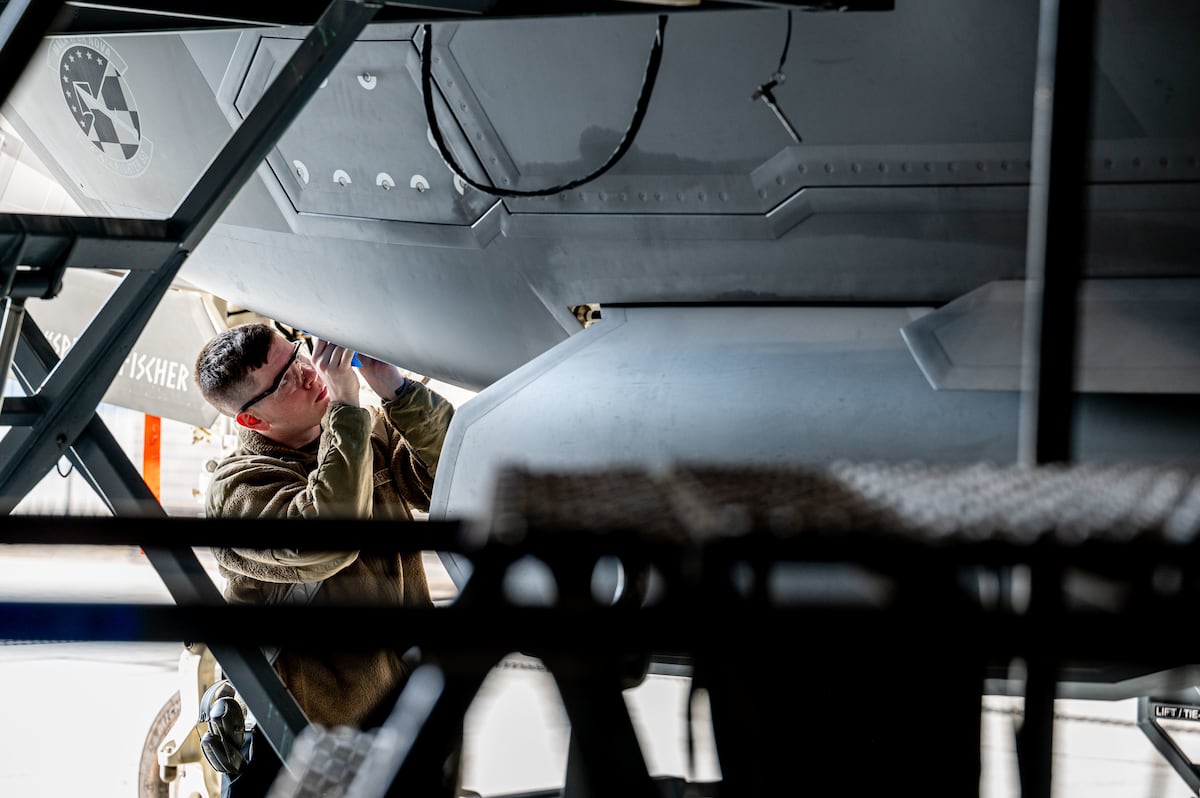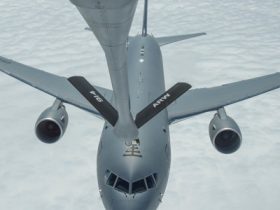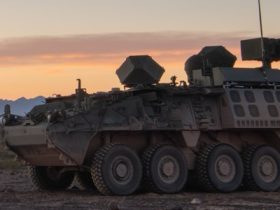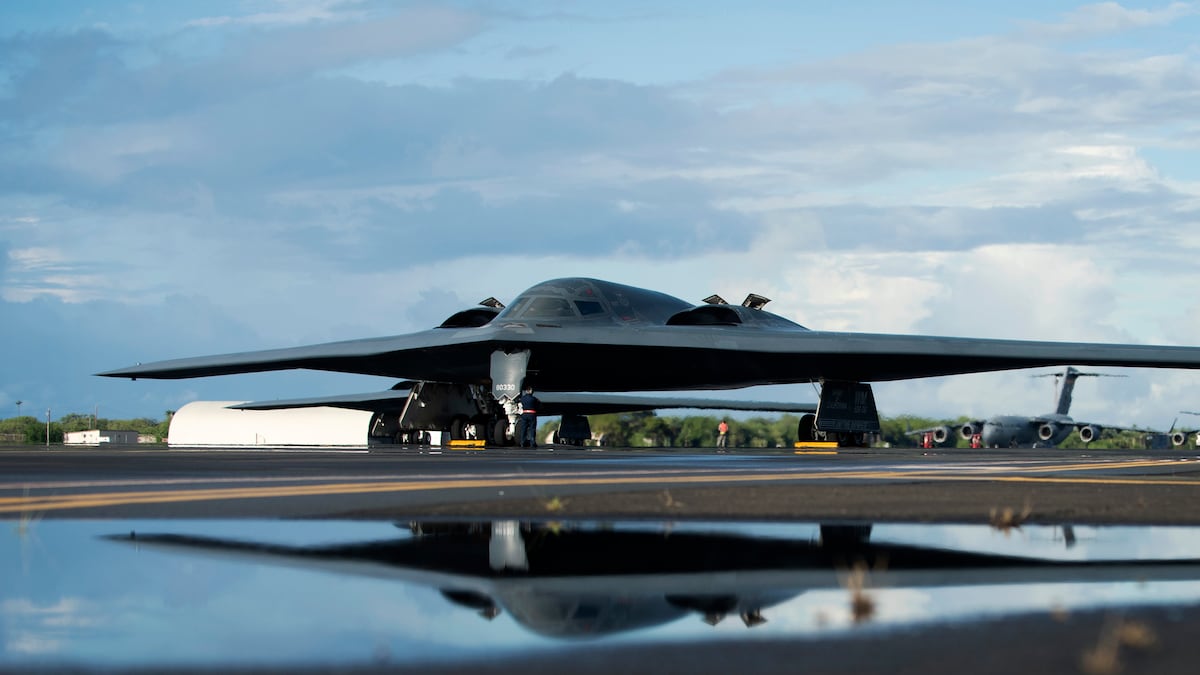The costs of maintaining, repairing and overhauling military aircraft is likely to spike worldwide in years to come as advanced planes make up a growing portion of fleets, according to a new study from consulting firm Oliver Wyman.
In the report, analysts Doug Berenson, Livia Hayes and Ian Ferguson said the global market for maintenance, repairs and overhauls of military aircraft — or MRO — totaled about $97 billion in 2025, and remained roughly flat over the preceding six years.
That is likely to change over the next decade, as MRO costs grow and spending rises at about 1.4% per year. That means militaries could be spending more than $111 billion on MRO by 2035.
The report, titled “The Military’s Mounting Cost for Cutting-Edge Technology: Why Global Air Forces Will Spend More on their Fleet MRO,” was provided to Defense News by Oliver Wyman.
A key factor driving these higher MRO costs, the report said, is the growing number of advanced aircraft such as the F-35 Joint Strike Fighter. Such jets bring dramatically more sophisticated capabilities, such as stealth, than older jets. But their complex software, advanced propulsion systems, exotic materials and other technologies require more service hours to sustain and higher operating costs.
Lockheed Martin says it has delivered more than 1,170 F-35s around the world. The U.S. Air Force now has about 471 F-35As and eventually plans to buy 1,763 of the jets.
The report said that of the roughly 310 fighter jets bought each year by militaries worldwide, about half are F-35s. They make up 2.2% of the global fleet now, and over the next decade F-35s are projected to grow to 4.7% of the global fleet.
“By 2035, the F-35 alone will account for 9.5% of the global total MRO spending — more than twice the aircraft’s share today,” the report said.
But F-35s aren’t the only advanced aircraft swelling militaries’ fleets. The Air Force is also working on two sixth-generation aircraft, the B-21 Raider stealth bomber and the F-47 fighter, also known as Next Generation Air Dominance.
The Air Force also wants a fleet of more than 1,000 semi-autonomous drone wingmen, known as collaborative combat aircraft, to fly alongside its piloted fighters, and is working with General Atomics and Anduril Industries on the first iteration of CCAs.
The U.S. Navy, as well as European and Asian militaries, are also looking hard at their own sixth-generation fighters. The report said those nations’ governments should take MRO costs’ effect on budgets into account as those planes are designed.
The report also cited European aircraft such as the Airbus A400M Atlas, an advanced heavy transport plane, and the NHIndustries NH90 helicopter as examples of complex aircraft headed for military fleets.
Complex aircraft worldwide now make up about 11% of military fleets, the report said, but a decade from now that will be up to 17%.
NATO fleets now spend about 16% of their MRO budgets on complex aircraft, the report added. By 2035 that share will have risen to 26%.
The increasing importance of drones in warfare, particularly in Ukraine, is also causing MRO spending to grow. Over the last five years, major air forces around the world added 350 unmanned aerial vehicles to their fleets, bringing the total to more than 1,400. That is expected to more than double over the next decade, to 3,460 worldwide.
“MRO spending [on drones] has started to grow faster than the global fleet,” the report said. “Besides the increased sophistication of newer platforms, the supercharged demand has been driven by aircraft needs related to the three-year-old conflict in Ukraine. For governments operating these aircraft, the coming period of higher growth will bring significant challenges and questions about how ready is ready enough.”
Governments will need to strike the right balance between multiple priorities, the report noted, including determining how valuable high aircraft readiness is compared to the rising maintenance costs that would require.
The report said air forces will need to expand their supply chains for spare parts, so they are not dependent on sources that are diminishing or even going out of business. That issue of parts sources drying up has, over time, become an acute problem for decades-old planes like the B-52 Stratofortress.
Air forces also need to figure out whether they want to have the original manufacturer of planes or drones conduct the necessary MRO work, which may be simpler but come with a higher price tag.
If air forces cannot adequately budget for growing MRO expenses, the report said, other aspects of those forces’ airpower can suffer. The report pointed to the U.S. Air Force’s decision in recent years to dial back the number of flying hours budgeted for its planes, and its inability to turn around declining mission-capable rates, as it focused instead on bringing on new technologies and aircraft it hopes will plug those gaps.
“As it prioritizes modernization, the Air Force is betting that it can manage these readiness risks,” the report stated.
Stephen Losey is the air warfare reporter for Defense News. He previously covered leadership and personnel issues at Air Force Times, and the Pentagon, special operations and air warfare at Military.com. He has traveled to the Middle East to cover U.S. Air Force operations.
Read the full article here








Leave a Reply